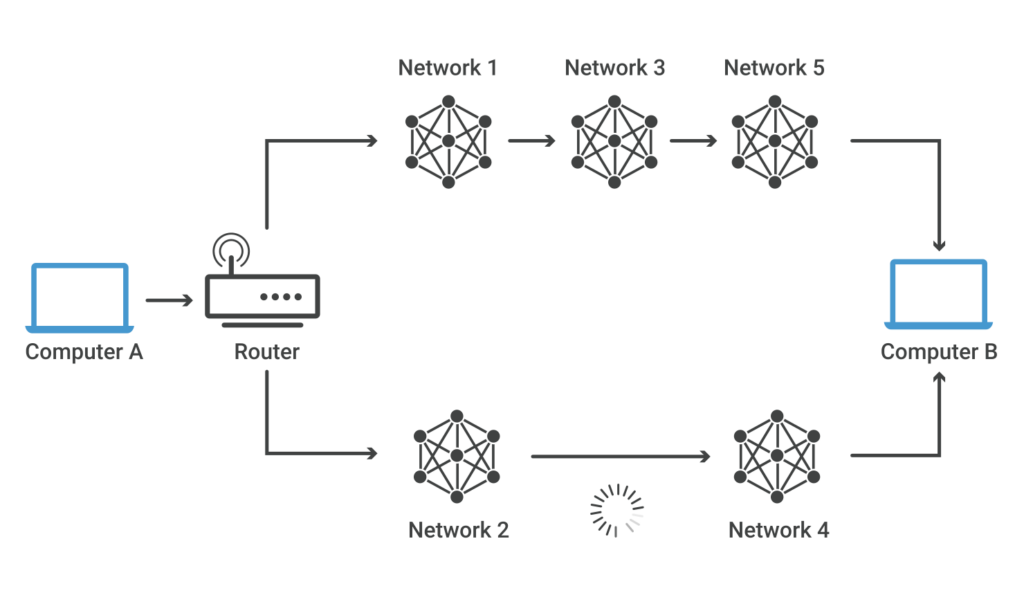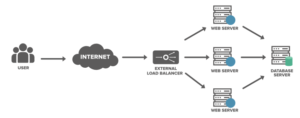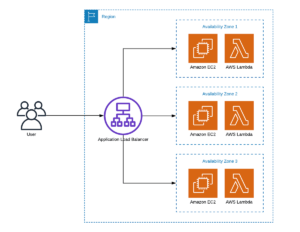What is Routing?
Network Routing is a method of selecting routes across one or more networks. The routing applies to all networks, from telephone to public data transmission. In packet-switching networks, routing selects the shortest past for packets to travel from the source to its destination. Routers are responsible for making these decisions.

How Routing Works?
Let’s start to understand how routing works by using a simple example. Let’s dive in:
Imagine you want to go from one place to another you haven’t been before. You were using GPS systems to navigate. After searching for your destination, GPS returns a path for your route containing congestions, traffic lights, intersections, etc. After reviewing the way, you choose the shortest and best path for travel. In this way, routers also consider congestion, and latency, and choose the right way for the packets to travel.
Routers are like routing managers for the network. They examine the data and look at the destination of the data to determine where to send it and what path to choose. Router chooses the “roads” of the internet, which are network connections, to help data reach its destination within the shortest time.
Routers refer to internal routing tables to make decisions about how to route packets along network paths. A routing table records the paths that packets should take to reach every destination that the router is responsible for. Think of train timetables, which train passengers consult to decide which train to catch. Routing tables are like that but for network paths rather than trains.
Routers do this millions of times a second with millions of packets. As a packet travels to its destination, it may be routed several times by different routers.
Routing tables can either be static or dynamic. Static routing tables do not change. A network administrator manually sets up static routing tables. This essentially sets in stone the routes data packets take across the network unless the administrator manually updates the tables.
Dynamic routing tables update automatically. Dynamic routers use various routing protocols (see below) to determine the shortest and fastest paths. They also make this determination based on how long it takes packets to reach their destination — similar to the way Google Maps, Waze, and other GPS services determine the best driving routes based on past driving performance and current driving conditions.
Dynamic routing requires more computing power, smaller networks may rely on static routing. But for medium-sized and large networks, dynamic routing is much more efficient.
Main Protocols Used?
In networking, a protocol is a standardized way of formatting data so that any connected computer can understand the data. A routing protocol is a protocol used for identifying or announcing network paths. The following protocols help data packets find their way across the internet:
Internet Protocol (IP)
The Internet Protocol (IP) plays a vital role in routing by specifying the source and destination. It reads packet headers and the address where to send the data packet to make a route. It was like a GPS makes a route between two points.
Routing Information Protocol (RIP)
The Routing Information Protocol (RIP) uses “hop count” to specify the number of routers present in the network. RIP uses “hop count” to define the route of how data packet travels in the network.
Open Shortest Path First (OSPF)
The Open Shortest Path First (OSPF) protocol is used to dynamically identify the shortest and fastest available paths for data packets to travel.
Border Gateway Protocol (BGP)
The Border Gateway Protocol (BGP) is used to define which networks control which IP Address, and which network connects each other. It is a dynamic routing protocol that manages the ranges of the IPs.
Conclusion
In conclusion, routing is a vital process in computer networking for defining the shortest path for the data to travel. It uses various components like routing tables, hop count, IP addresses, and routers to make a path. Routing protocols facilitate the automatic exchange of routing information across network routers, ensuring reliable and efficient data transmission. IP addresses play a vital role in this process by defining the addresses or points for the data to travel. Ultimately, routing enables seamless communication and data exchange within and between networks, forming the backbone of modern networked systems.



